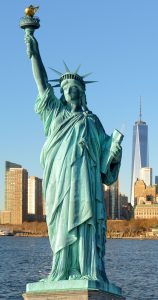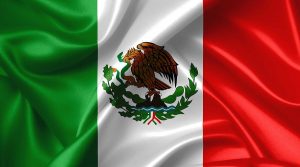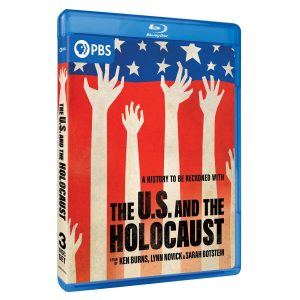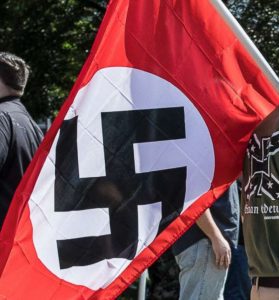SYMBOLS
 Emma Lazarus wrote:
Emma Lazarus wrote:
“Mother of Exiles glows worldwide welcome
Keep ancient lands your storied pomp
Give me your tired, your poor
Your huddled masses yearning to breathe free
The wretched refuse of your teeming shores
Send these, the homeless tempest tossed to me
I left my lamp beside
The Golden door.”
As we know, that poem was placed at the base of America’s superb symbol of freedom, The Statue of Liberty.
But did we mean it?
Did, do, we want the wretched masses at our Golden door?
Or is it all fiction, nothing more than a lovely poem that seems to fit the stories we tell about ourselves, until we actually look at what we’ve been, what we’ve tried to do, what our attitudes and actions truly mean?
And if so, what does it say about us as a people who continually tell the World that we, and our democracy, are the ultimate models of freedom, opportunity, and yes, happiness and that everyone deserves to live that way?
Are we that model? Have we ever been?
BOUNDARIES
 We began as nothing more than a colony of European immigrants under British rule. Great Britain controlled most of the World’s nations at that time.
We began as nothing more than a colony of European immigrants under British rule. Great Britain controlled most of the World’s nations at that time.
When those immigrants had enough of the British they declared their independence, brought together thirteen existing colonies under a single Constitution, rebelled, fought great battles and drove the British out.
Once established as a nation, it took less than 15 years for these immigrants to establish an immigration policy that by 1790 clearly restricted nationalized citizenship to whites only as they chose to accept only Northern and Western Europeans as well as those from West Africa because of slavery and made certain to keep Europeans from the South and East as well as Asians away from our shores.
By 1820 they began to include immigrants from Southern and Eastern Europe and from Asia. But in 1882 immigration policies were altered to control the number of immigrants by excluding certain races and ethnicities.
The immigration act of 1924 permanently established the National Origins Formula as the basis of a policy which largely restricted immigration from Asia, Southern and Eastern Europe to “preserve the ideal of American homogeneity” and by so doing identified the United States as the global leader in codified racism.
The fundamentals of that act remained in force until 1965 when the US made changes that permitted the development of DACA…the dreamers act.
 And that change opened the door to immigration from the Hispanic world so that by the end of the 20th Century 70% of all immigration came from Mexico.
And that change opened the door to immigration from the Hispanic world so that by the end of the 20th Century 70% of all immigration came from Mexico.
But this is not a history of immigration.
Nor is it about the difficulties we have had developing an immigration policy that wins national approval no matter who the President is, or which political party has assumed power.
Rather, this is a look at what America has been since its inception; at whether we are “the nation of immigrants” genuinely welcoming the “the wretched, homeless, tempest tossed” to enter our Golden door or simply live under the illusion that we are.

At first the idea of another documentary about the Holocaust was puzzling; so many have been produced. Those images of Hitler ranting, Nazis marching, books burning, concentration camps and gas chambers slaughtering Jews, the German army roaring through Europe, the bombing of London have presented the story in disturbing, heartbreaking and yet important detail.
But what Burns had in mind was something else. The title gave us a clue as hour by hour revealed his genuine intent – to show America’s reaction to all of it and to openly suggest that what happened to democracy so long ago could be happening again today here.
The key to how America felt about the Holocaust then, what we did and did not do about it then, exists today in how we understand and react to the threats against democracy today.
That key is in recognizing how people felt then about those seeking to come to America and about how people feel now about those who are coming to America across borders with no walls and no fair, equitable immigration policies that make a truth of the Emma Lazarus poem at the base of the Statue of Liberty.
This is America in 2022…not the years of those seeking escape from death in Hitler’s Germany. But are the values different? Is escaping from the horrors of living in Central America’s dictatorships any different? Did we want them in the 1930’s? Do we want them now?
 Hitler’s “Mein Kampf” was written while he was in an Austrian prison in the early 1920’s and published in 1925. It told of his growing antisemitism and anticommunist attitudes and revealed that he saw the United States treatment of its black slaves and its Native Americans (Indians) as a perfect example of how he would one day rid Germany of its Jews, communists and all other “undesirables”.
Hitler’s “Mein Kampf” was written while he was in an Austrian prison in the early 1920’s and published in 1925. It told of his growing antisemitism and anticommunist attitudes and revealed that he saw the United States treatment of its black slaves and its Native Americans (Indians) as a perfect example of how he would one day rid Germany of its Jews, communists and all other “undesirables”.
As his National Socialist Party took over the very democratic Weimar Republic, the most purely democratic government in all of Europe, and he began his systematic effort to make the lives of Jews in Germany a living hell, he answered some vocal critics from America this way “Mississippi” and that was all that need to be said.
For years many of the books describing the early years of the administration of Franklin Delano Roosevelt pictured FDR as reluctant to help ameliorate the problems in Germany by opening our borders to those Jewish families who were anxious to escape to America.
Burns suggests otherwise. He states bluntly that members of Congress, even the Congresses FDR controlled, and public opinion joined against any action he might take to get America involved.
When movie newsreels showed Jews forced to wear Stars to identify themselves, people being taken by force from their homes and sent away, and pictured mass book burnings throughout Germany, 52% of the American public felt that all of it was wrong.
But 70% said they did not want ‘those people’ coming to an America still struggling from a Depression and scared that their jobs might be at risk.
Public opinion and continued Congressional pushback did not change as the Depression gave way to a national industrial effort to help our friends in Europe by manufacturing the arms and airplanes necessary to help them fight off an advancing German military blitz which was storming across Europe conquering one nation after the other.

And then Japan attacked Pearl Harbor and the United States declared war on Japan and Germany.
It cannot be forgotten that despite the fact that America contained many Japanese citizens, this country put 120,000 Japanese people in a containment camp until the war was over. .
In time America’s power, its courageous armed forces and those nations who cooperated with it while still under German control, pushed into Germany and we came face to face with the death camps and what they had done. Losing, Hitler had commanded that everyone in dozens of concentration camps had to be killed. Gas chambers could kill 60,000 Jews daily.

And then Eisenhower saw to it that a number of Congressional committees came to the death camps as well.
Suddenly American movie houses which had not shown a single anti-German film until after we had declared war, changed that policy and newsreels began showing all of the horrors of the death camps as they had never been seen before by Americans.
There was shock and many declarations of sadness and sympathy.
And yet, when pollsters asked Americans about refugees from this horror coming to America, 70% said that they didn’t want refugees here and that they would be better off staying in Europe.
THE GOLDEN DOOR
 Burns’ documentary takes us to modern day, to the march of Nazi flags in Charlottesville, Va. and the rush of white shirted haters screaming that “You’re not going to take our jobs’ You’re not going to take our jobs.” And the comforting words of newly elected President Donald J. Trump that there were good people on both sides of the fights that broke out during the Charlottesville march.
Burns’ documentary takes us to modern day, to the march of Nazi flags in Charlottesville, Va. and the rush of white shirted haters screaming that “You’re not going to take our jobs’ You’re not going to take our jobs.” And the comforting words of newly elected President Donald J. Trump that there were good people on both sides of the fights that broke out during the Charlottesville march.
The documentary mentions the social media rush of wild unproven ideas and unbelievable conspiracy theories. He does not suggest what we believe that a nation plagued by ignorance genuinely cannot tell the difference between a truth and a lie.
He brings us right up to the January 6 riots in the Capital reminding us that Germany’s democratic Weimar Republic died almost immediately under Hitler’s campaign of prejudice and fear…with Germans accepting his lies and scapegoating.
The fear in this country is underlined by the impossibility of developing a successful immigration system recognizing the horrors of those living in Central American countries.
After centuries of racist immigration policies Americans seem to fear brown people coming to work here.
We have lived in Texas for years. Without Mexican labor, Texas would disappear.
We have lived in New Jersey – The Garden State for years. Wherever you drive across that State you see neat, beautifully manicured lawns and gardens. It is striking. While the Mafia might control the landscaping work, it is the Hispanic labor – Peruvians, Chileans, Dominicans and Guatemalans – that do the hard work to make those gardens beautiful. New Jersey’s beauty depends on them.
But fear exists. And hate. And lies. And danger.
Another Germany? Not possible, you say.
But today they are burning books in school districts across this country.
